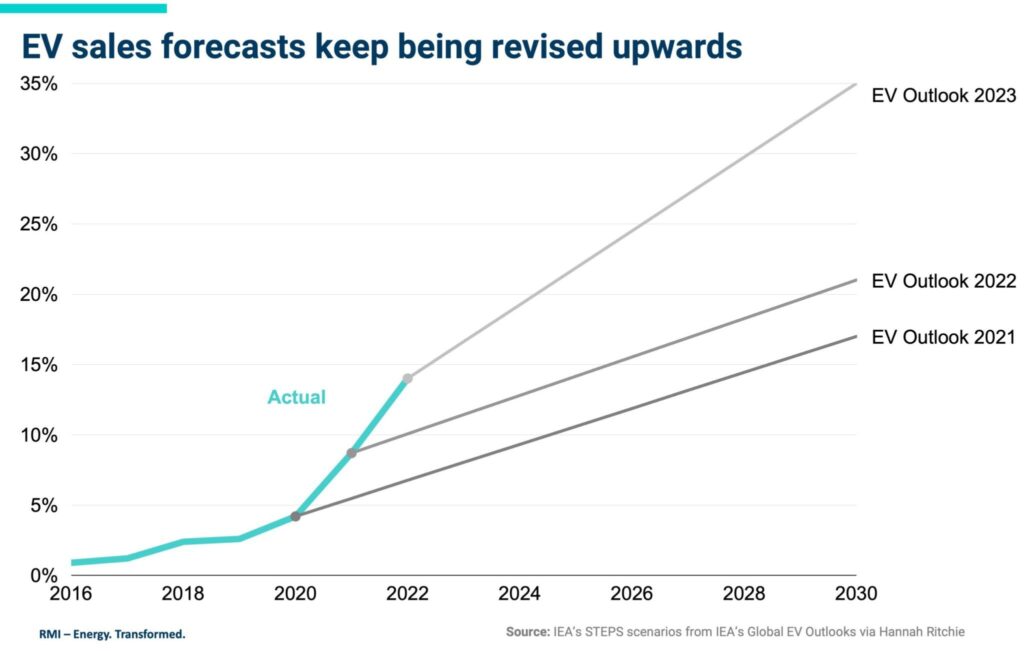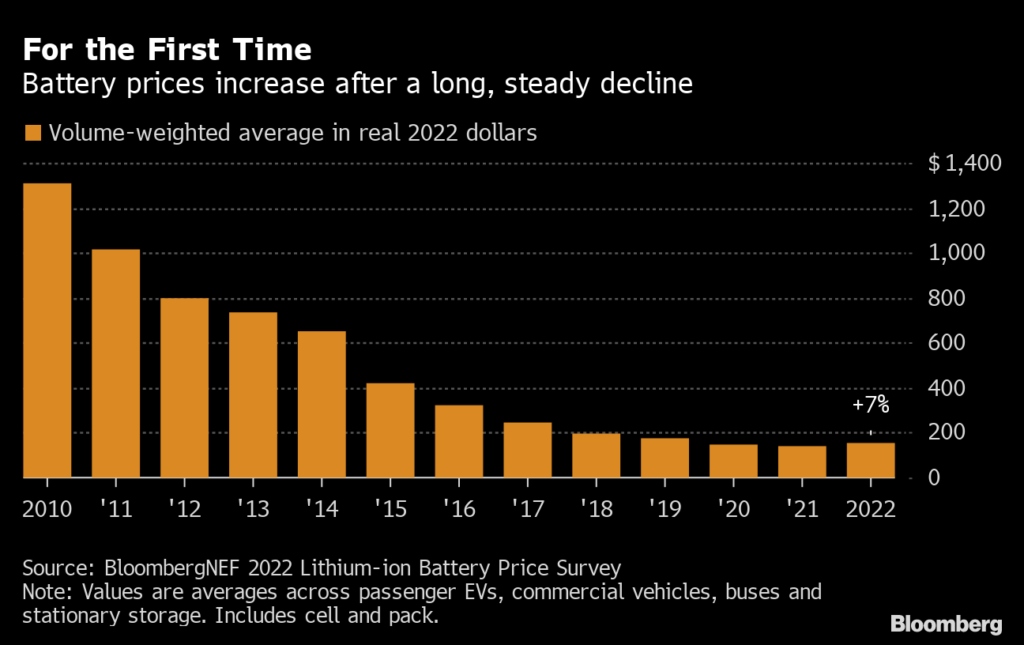
The electric vehicle market is experiencing an exponential surge in growth year over year, surpassing even the most optimistic predictions. Each year, experts and analysts reassess their forecasts, and these revisions consistently result in upward adjustments.
In 2023, EV sales are expected to represent approximately 15% of the global automotive market share, marking a remarkable achievement for the industry. Several key factors contribute to this upward trend, including decreasing battery prices, environmental consciousness, infrastructure development, and societal shifts toward sustainability.
One of the primary catalysts behind the rapid growth of the electric vehicle market is the steady decline in battery prices. For reference, battery prices have decreased from $1200 USDollars/kWh in 2010 to $150 USDollars/kWh in 2022 (Bloomberg NEF). Several factors contribute to this price reduction, including economies of scale, technological advancements, and increased production efficiency. As demand for EVs continues to surge, automakers and battery manufacturers are scaling up their operations, driving down production costs to lower than $100 USDollars/kWh by 2030 (ICCT – International Council on Clean Transportation)
Each year, experts and analysts reassess their forecasts, and these revisions consistently result in upward adjustments.

Improvements in battery technology, such as new cathode and anode materials, and the development of solid-state batteries, have also played a pivotal role in making EVs more affordable. These cost savings are directly passed on to consumers, making electric vehicles an attractive and financially viable option.
Consumers are increasingly drawn to electric vehicles not only because they are becoming more cost-competitive to traditional ICEs, but also due to their substantial environmental benefits. With concerns about climate change and air pollution growing, many individuals are seeking greener transportation alternatives. EVs produce zero tailpipe emissions, significantly reducing air pollution and greenhouse gas emissions.
Moreover, the lower operating costs of electric vehicles, including reduced “fuel” and maintenance expenses, make them an appealing choice for budget-conscious consumers. As more people recognize the ecological and financial advantages of electric vehicles, the market share continues to expand.

As demand for EVs continues to surge, automakers and battery manufacturers are scaling up their operations, driving down production costs to lower than $100 USDollars/kWh by 2030 (ICCT – International Council on Clean Transportation).
Another factor contributing to the growth of the EV market is the continuous improvement in driving ranges. Early EVs were often criticized for their limited range, which created “range anxiety” among potential buyers. However, advancements in battery technology have led to significant enhancements in driving ranges. Many modern electric vehicles can now travel over 300 miles on a single charge, eliminating range anxiety and making EVs suitable for long-distance travel. This improvement has played an important role in convincing consumers to make the switch from traditional internal combustion engine vehicles to electric ones.
While infrastructure development in the electric vehicle sector has been slower than ideal, it has still been a crucial driver of market share growth. Governments and private enterprises are actively investing in expanding the charging infrastructure, making EV ownership more convenient and accessible. The proliferation of charging stations at homes, workplaces, and along highways has significantly reduced charging-related concerns. As charging infrastructure becomes more widespread, more consumers are inclined to consider electric vehicles, boosting market share.
Many modern electric vehicles can now travel over 300 miles on a single charge, eliminating range anxiety and making EVs suitable for long-distance travel.
The electric vehicle market’s remarkable growth trajectory is a testament to the industry’s resilience and adaptability. Key factors driving this expansion include decreasing battery prices, environmental consciousness, improving driving ranges, and infrastructure development. Experts and analysts anticipate that this trend will persist, driven by stricter emissions regulations, ongoing technological advancements, and a broader societal shift toward sustainability. Looking ahead, electric vehicles are set to become an even more prominent and integral part of the global automotive landscape, contributing to a cleaner and more sustainable future.
